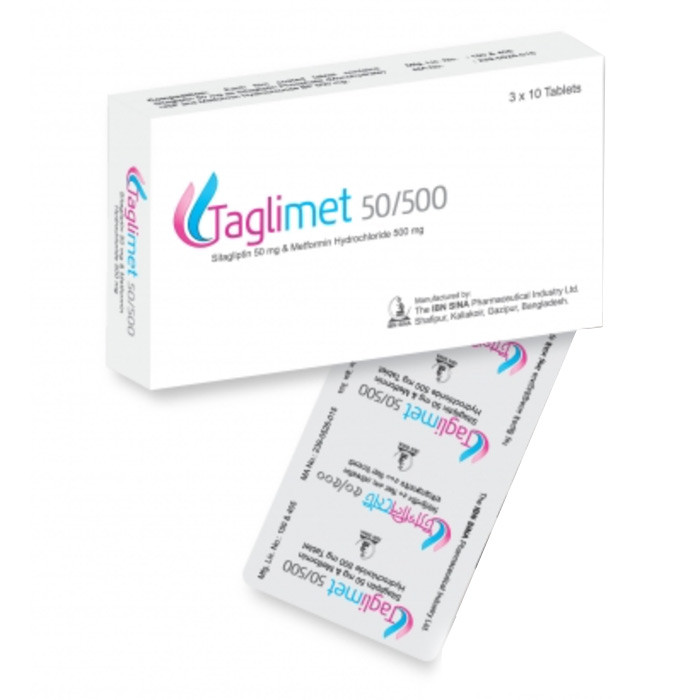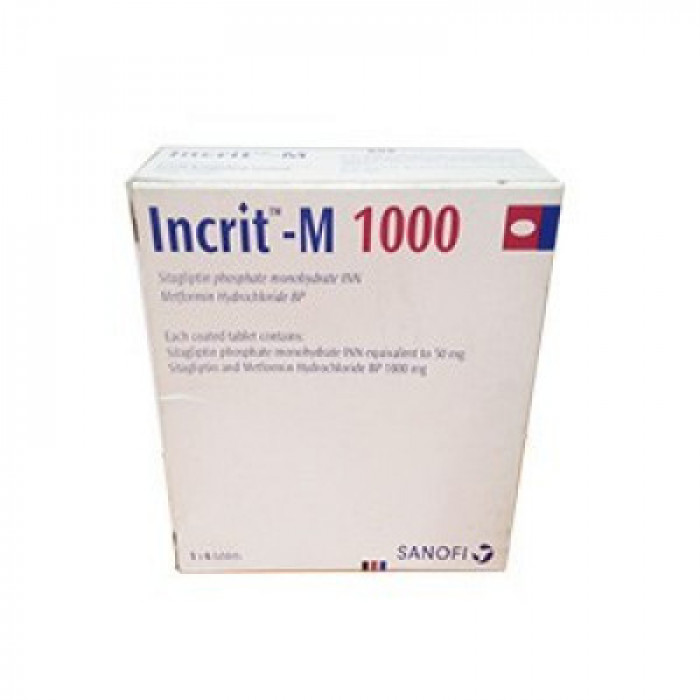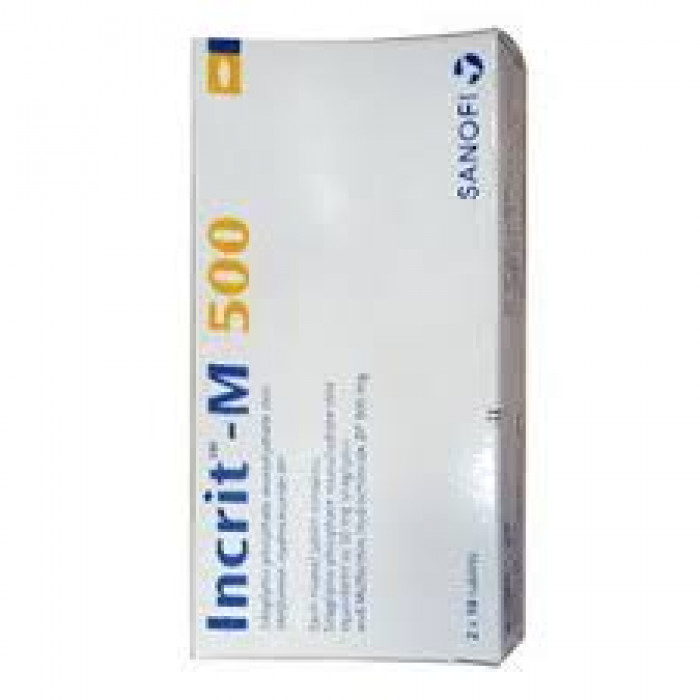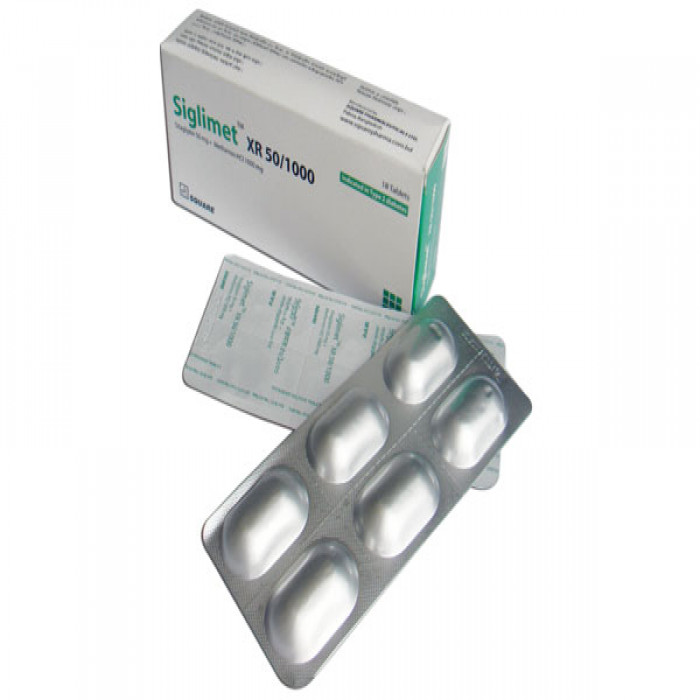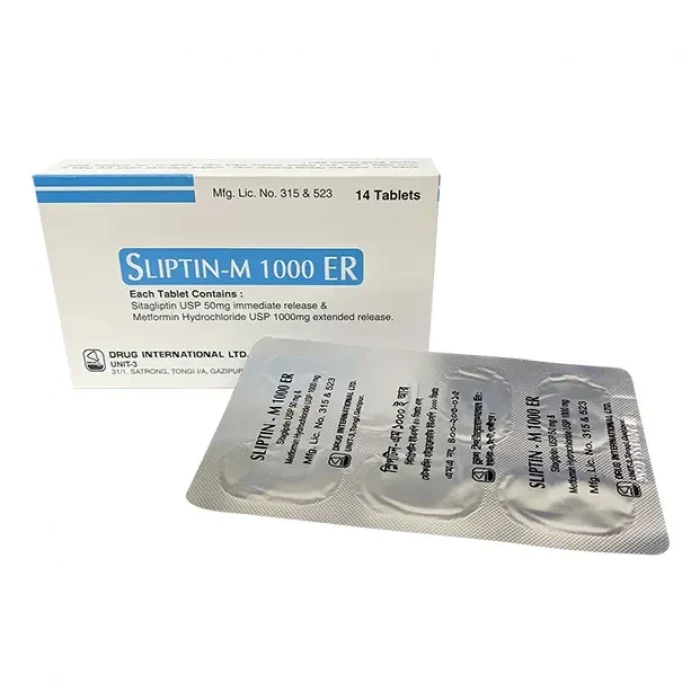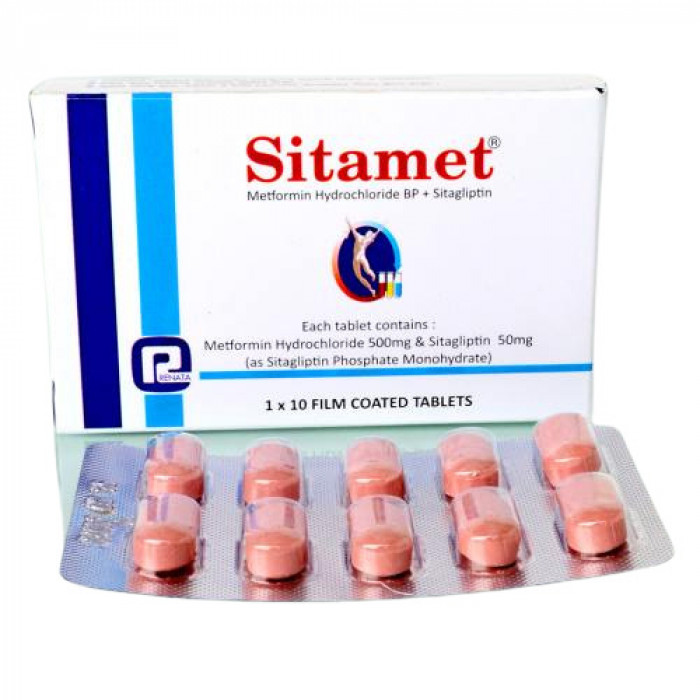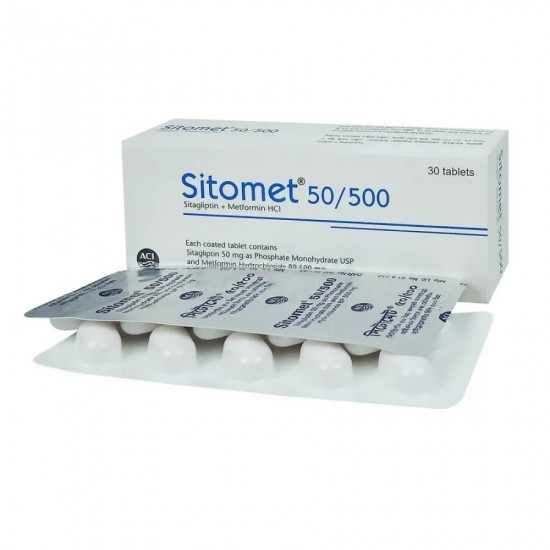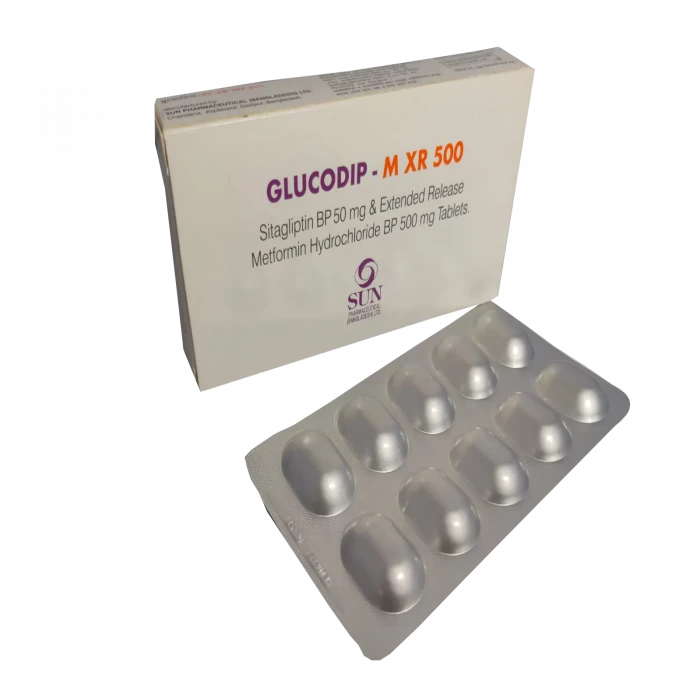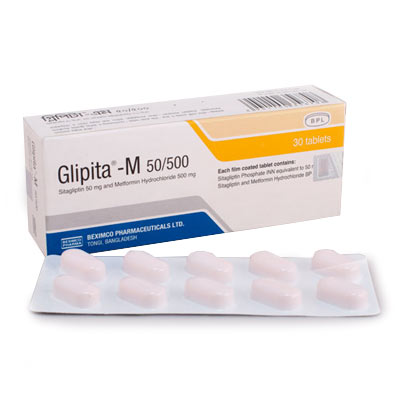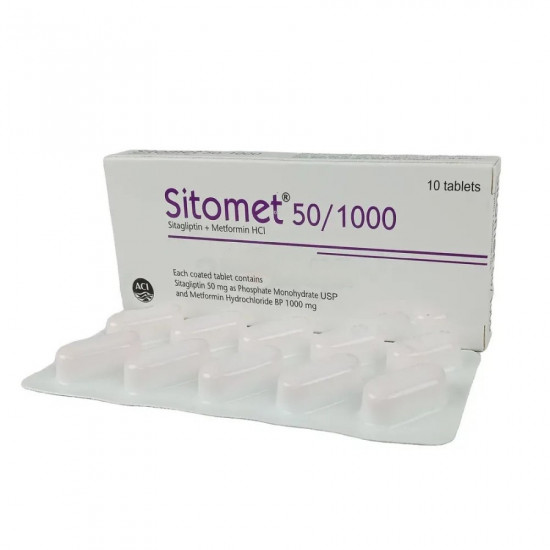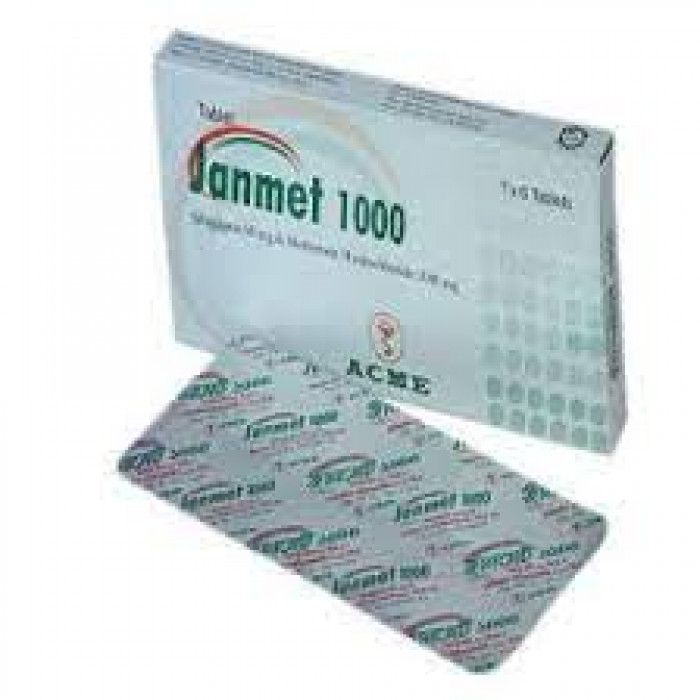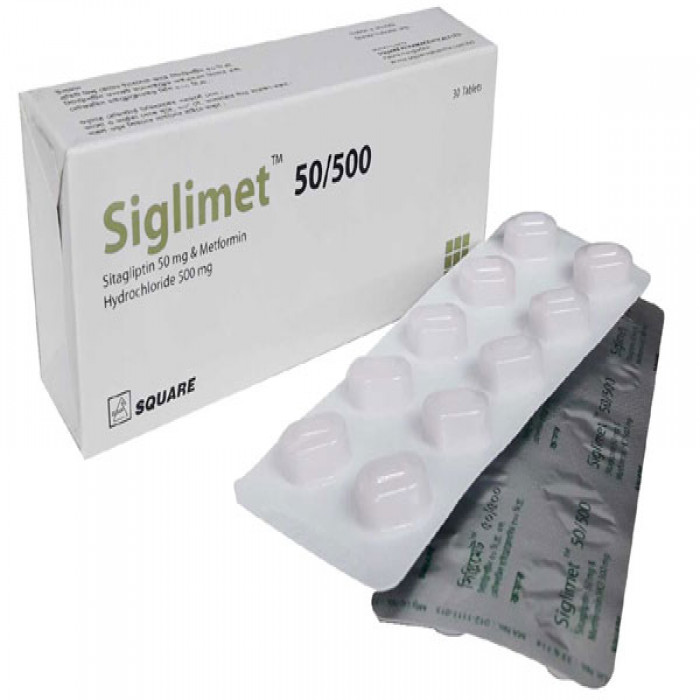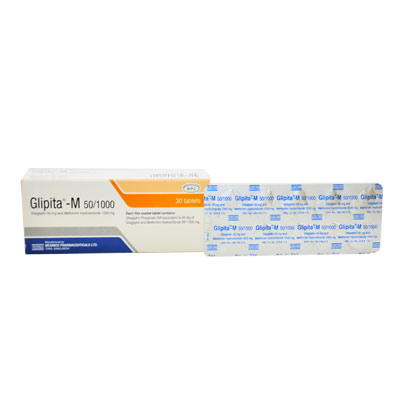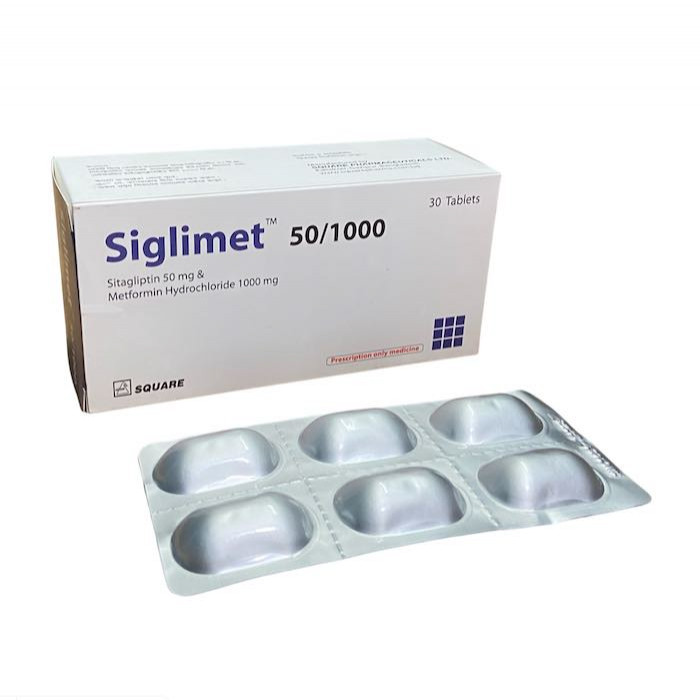
✔ 100% Authentic Product
👁️ Currently Viewing 1704
Siglimet 50/1000mg 6pcs
Generic Name: Sitagliptin 50mg + Metformin Hydrochloride 1000mg
Manufacturer/Distributor: Square Pharmaceuticals Ltd.
Discount
Price: ৳ 102
MRP:
৳
108
6%
Off

100% Genuine Products, Guaranteed

Safe & Secure Payments, Always

Fast, Secure & Efficient Delivery

Proper Packaging
 Cash on Delivery - All over Bangladesh
Cash on Delivery - All over Bangladesh Regular Delivery - 12-24 Hours, Dhaka City* Charge Tk.39-59
Regular Delivery - 12-24 Hours, Dhaka City* Charge Tk.39-59 Regular Delivery - 24-48 Hours, Other Cities* Charge Tk.99-110
Regular Delivery - 24-48 Hours, Other Cities* Charge Tk.99-110
 ফ্রি ডেলিভারিঃ - ৯৯৯ টাকা+ অর্ডারে, ঢাকা
শহরে
ফ্রি ডেলিভারিঃ - ৯৯৯ টাকা+ অর্ডারে, ঢাকা
শহরে ফ্রি ডেলিভারিঃ - ২৯৯৯ টাকা+ অর্ডারে, ঢাকার
বাহিরে
ফ্রি ডেলিভারিঃ - ২৯৯৯ টাকা+ অর্ডারে, ঢাকার
বাহিরে
100% Genuine Products, Guaranteed
Safe & Secure Payments, Always
Fast, Secure & Efficient Delivery
Proper Packaging
 Cash on Delivery - All over Bangladesh
Cash on Delivery - All over Bangladesh Regular Delivery - 12-24 Hours, Dhaka City* Charge Tk.39-59
Regular Delivery - 12-24 Hours, Dhaka City* Charge Tk.39-59 Regular Delivery - 24-48 Hours, Other Cities* Charge Tk.99-110
Regular Delivery - 24-48 Hours, Other Cities* Charge Tk.99-110 ফ্রি ডেলিভারিঃ - ৯৯৯ টাকা+ অর্ডারে, ঢাকা
শহরে
ফ্রি ডেলিভারিঃ - ৯৯৯ টাকা+ অর্ডারে, ঢাকা
শহরে ফ্রি ডেলিভারিঃ - ২৯৯৯ টাকা+ অর্ডারে, ঢাকার
বাহিরে
ফ্রি ডেলিভারিঃ - ২৯৯৯ টাকা+ অর্ডারে, ঢাকার
বাহিরে
✅ Description:
Indications
Siglimet is indicated as an adjunct to diet and exercise to improve glycemic control in adults with type 2 diabetes mellitus when treatment with both Sitagliptin and Metformin is appropriate.
Pharmacology
combines two antihyperglycemic agents with complementary mechanisms of action to improve
glycemic control in patients with type 2 diabetes: Sitagliptin, a dipeptidyl peptidase-4 (DPP-4) inhibitor, and Metformin Hydrochloride, a member of the biguanide class. Sitagliptin is a dipeptidyl peptidase-4 (DPP-4) inhibitor, which is believed to exert its actions in patients with type 2 diabetes by slowing the inactivation of incretin hormones. Incretin hormones, including glucagon-like peptide-1 (GLP-1) and glucose-dependent insulinotropic polypeptide (GIP), are released by the intestine throughout the day, and levels are increased in response to a meal. These hormones are rapidly inactivated by the enzyme, DPP-4. The incretins are part of an endogenous system involved in the physiologic regulation of glucose homeostasis. When blood glucose concentrations are normal or elevated, GLP-1 and GIP increase insulin synthesis and release from pancreatic beta cells by intracellular signaling pathways involving cyclic AMP. GLP-1 also lowers glucagon secretion from pancreatic alpha cells, leading to reduced hepatic glucose production. By increasing and prolonging active incretin levels, Sitagliptin increases insulin release and decreases glucagon levels in the circulation in a glucose-dependent manner. The pharmacologic mechanism of action of Metformin is different from other classes of oral antihyperglycemic agents. Metformin decreases hepatic glucose
production, decreases intestinal absorption of glucose, and increases peripheral glucose uptake and utilization.
Dosage & Administration
The starting dose of this tablet should be based on the patient's current treatment plan. This tablet should be taken twice a day with meals.
The recommended starting dose for patients currently not receiving metformin treatment is sitagliptin 50 mg/metformin hydrochloride 500 mg twice daily. Gradually increasing the dose is recommended to reduce metformin-related gastrointestinal side effects.
The starting dose for patients receiving metformin treatment should provide sitagliptin, 50 mg twice daily (100 mg total daily dose), and the metformin dose is already taken. For patients taking 850 mg of metformin twice a day, the recommended starting dose of the tablet is 50 mg of sitagliptin / 1000 mg of metformin hydrochloride twice a day.
There is no study specifically examining the safety and effectiveness of sitagliptin phosphate INN/metformin hydrochloride BP in patients who were previously treated with other oral hypoglycemic drugs and switched to sitagliptin phosphate INN/metformin hydrochloride BP. Any changes to the treatment of type 2 diabetes should be done with caution and adequate monitoring, as blood glucose control may change.
sustained-release tablet dosage: once a day, taken with meals, preferably at night. Gradually increase the dose to reduce gastrointestinal side effects caused by metformin. You can adjust the dose based on efficacy and tolerability, but it does not exceed the maximum recommended daily dose of 100 mg sitagliptin and 2000 mg extended-release metformin.
When switching between film-coated tablets and prolonged-release tablets, the total daily dose of sitagliptin and metformin remains the same and does not exceed the maximum recommended daily dose of 2000 mg of metformin prolonged-release tablets.
Patients using two sustained-release tablets (such as two 50/500 tablets or two 50/1000 tablets) should take two tablets per day. Sitagliptin 100 mg/metformin hydrochloride 1000 mg prolonged-release tablets should be taken as a single tablet once a day.
Patients receiving insulin secretagogues or insulin therapy: Co-administration with insulin secretagogues (such as sulfonylureas) or insulin may require lower doses of insulin or insulin secretagogues to reduce the risk of hypoglycemia.
Interaction
Cationic drugs: cationic drugs for clearing renal tubular secretions: use with caution.
Phenprocoumarin: Metformin may reduce the anticoagulant effect of Phenprocoumarin.
Therefore, it is recommended to monitor the INR closely.
Levothyroxine: Levothyroxine can reduce the hypoglycemic effect of metformin. It is recommended to monitor blood glucose levels, especially when starting or stopping thyroid hormone therapy, and adjust the dose of metformin if necessary.
Contraindications
This tablet is contraindicated in the following patients:
Kidney disease or renal insufficiency, for example. For example, serum creatinine level ≥ 1.5 mg / dL [male], ≥ 1.4 mg / dL [female], or abnormal creatinine clearance rate may also be caused by diseases such as cardiovascular failure (shock), acute myocardial infarction, and sepsis.
Chronic metabolic acidosis, including diabetic ketoacidosis, with or without coma.
Has a history of severe hypersensitivity to this product or sitagliptin, such as allergic reactions or angioedema.
In patients undergoing radiology studies involving intravascular injection of iodine contrast agents, this product should be temporarily discontinued because the use of such products may cause acute damage to renal function.
Side Effects
The most common adverse reactions reported by ≥5% of patients were started at the same time as sitagliptin and metformin. Diarrhea, upper respiratory tract infection, and headache were more common than in placebo-treated patients.
Adverse reactions ≥ 5% reported in patients treated with sitagliptin combined with sulfonylureas and metformin were hypoglycemia and headache and were more common than in patients treated with placebo combined with sulfonylureas and metformin.
Hypoglycemia is the only adverse reaction of ≥5% reported in patients receiving sitagliptin combined with insulin and metformin, and the incidence is higher than that of patients receiving placebo combined with insulin and metformin.
Nasopharyngitis is the only adverse reaction that occurs ≥5% in patients receiving sitagliptin monotherapy and is more frequent than in patients receiving placebo.
The most common adverse reactions (> 5%) of starting metformin treatment are diarrhea, nausea/vomiting, loss of appetite, abdominal discomfort, indigestion, fatigue, and headache.
Pregnancy & Lactation
Pregnancy category B. There is no adequate and well-controlled study in pregnant women using sitagliptin phosphate monohydrate INN/metformin hydrochloride BP or its individual components; therefore, the safety of sitagliptin phosphate monohydrate INN/metformin hydrochloride BP in sex pregnant women is not yet clear. The pill should be used during pregnancy only when clearly necessary. It is unknown whether sitagliptin is excreted in human milk. Since many drugs are excreted in human milk, caution should be exercised when administering this tablet to breastfeeding women.
Precautions & Warnings
Do not use the combination of Sitagliptin & Metformin in patients with hepatic disease. Before initiating the combination and at least annually thereafter, assess renal function and verify it as normal. May need to discontinue the combination and temporarily use insulin during periods of stress and decreased intake of fluids and food as may occur with fever, trauma, infection, or surgery
Storage Conditions
Store below 25°C in a dry place away from light. Keep the medicines in a safe place, out of the reach of children. Do not use it later than the date of expiry. To be dispensed only on the prescription of a registered physician.
⚠️Disclaimer:
At ePharma, we’re committed to providing accurate and accessible health information. However, all content is intended for informational purposes only and should not replace medical advice from a qualified physician. Please consult your healthcare provider for personalized guidance. We aim to support, not substitute, the doctor-patient relationship.




